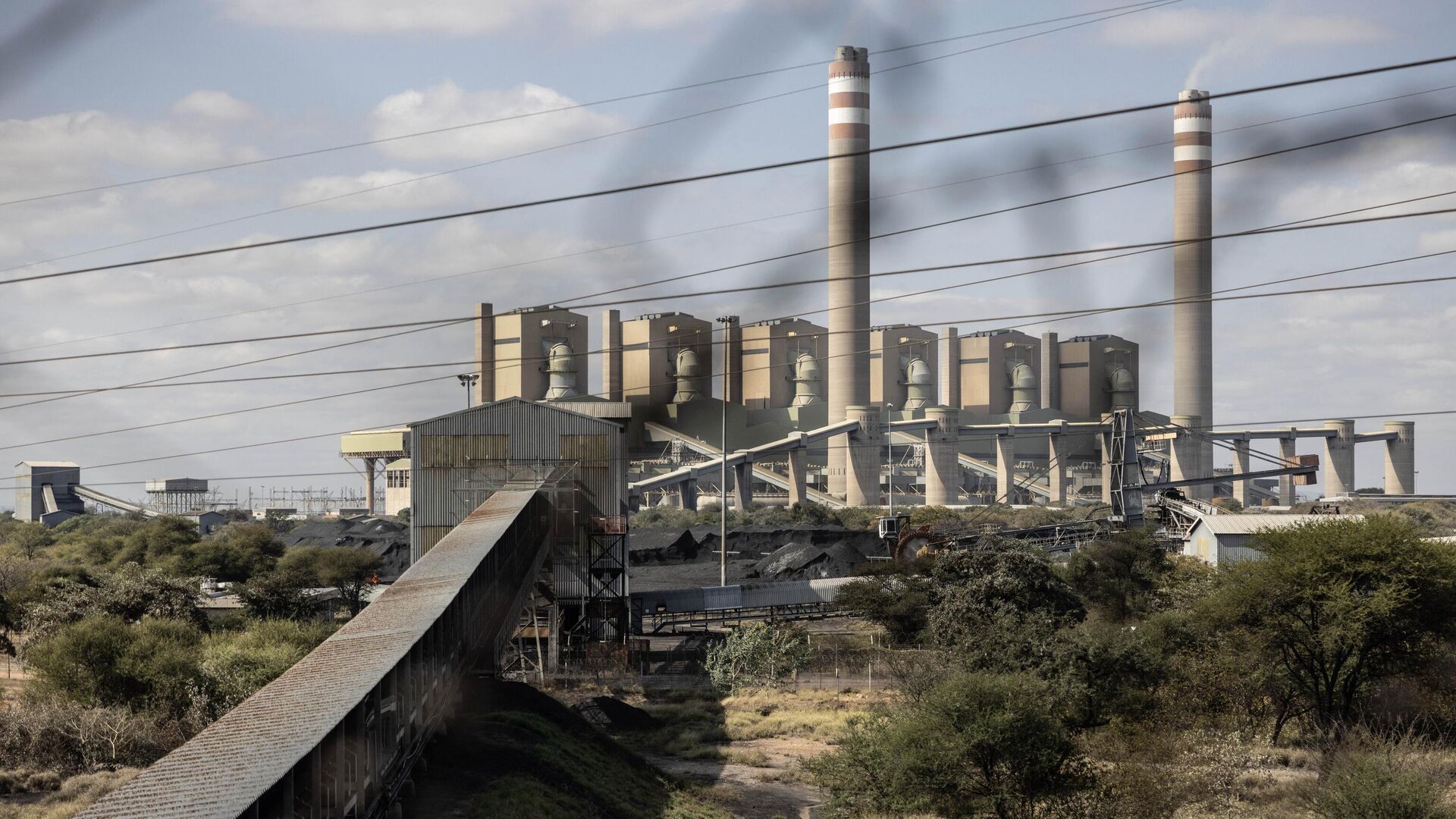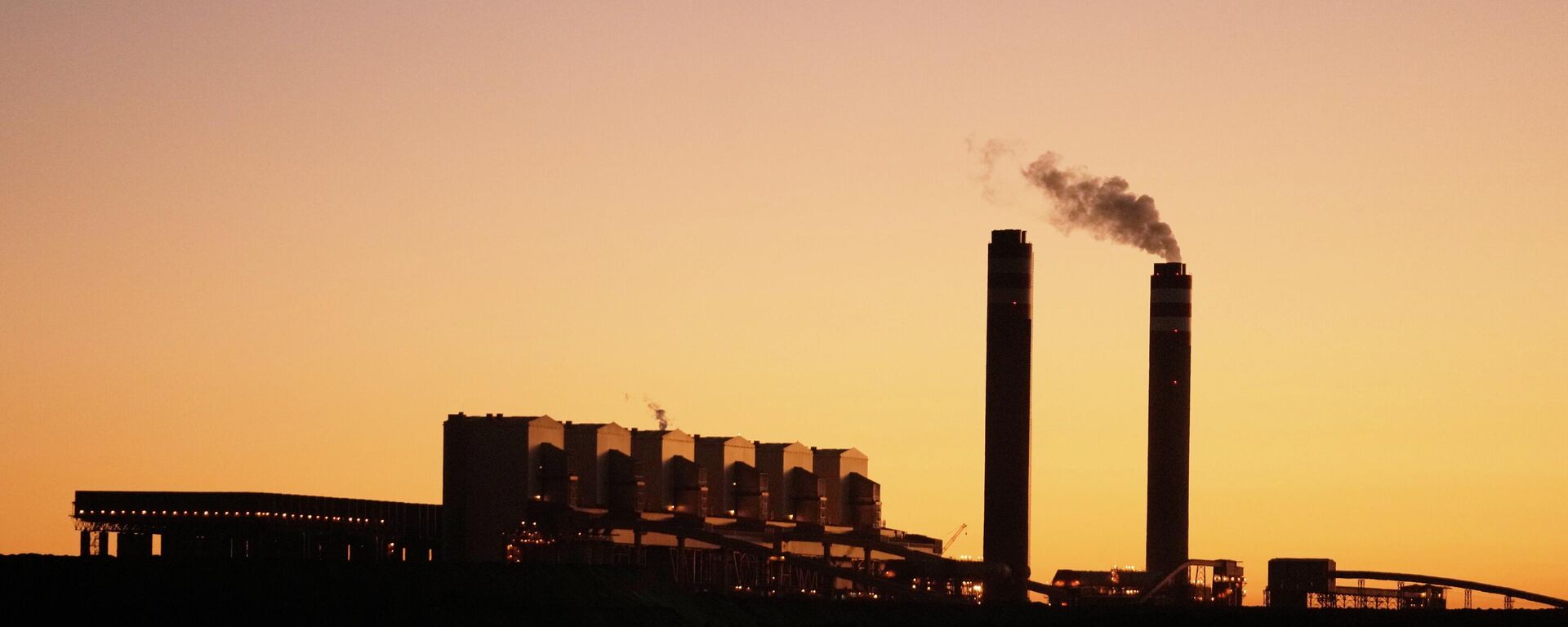https://en.sputniknews.africa/20231210/what-challenges-lie-ahead-of-south-africas-eskoms-new-ceo-amid-energy-crisis-1064051033.html
What Challenges Lie Ahead of South Africa's Eskom's New CEO Amid Energy Crisis?
What Challenges Lie Ahead of South Africa's Eskom's New CEO Amid Energy Crisis?
Sputnik Africa
For more than a decade, the heavily indebted corporation Eskom has faced difficulties in maintaining operations in the most developed economy in Africa with a... 10.12.2023, Sputnik Africa
2023-12-10T18:14+0100
2023-12-10T18:14+0100
2023-12-10T18:14+0100
features
south africa
southern africa
eskom
jacob zuma
electricity
energy crisis
debt
debt relief
power
https://cdn1.img.sputniknews.africa/img/07e7/0c/0a/1064055005_0:8:3070:1735_1920x0_80_0_0_230a9a619ec3118f4826facb59ef3a90.jpg
On Friday, the government of South Africa appointed Dan Marokane as the next CEO of the energy company Eskom, against the backdrop of government promises to end the energy crisis by 2024.Marokane, who had senior positions at Eskom in the past, is expected to return by March 31 of the next year, the organization said.Since 2008, the state-owned utility has introduced daily scheduled power outages, called load shedding, to protect the grid when demand exceeds supply. However, in 2023, these blackouts have intensified, frequently lasting up to 12 hours a day.In view of Eskom getting a new steersman, Sputnik Africa tried to figure out what difficulties and tasks lie before the new head of the company.Effective Management and ReformsDue to revenue losses from the outages, Eskom announced a 23.9 billion-rand ($1.26 billion) net loss for 2022-2023 fiscal year. For the year ending in March 2024, the company anticipates reporting a comparable outcome. Marokane needs to show that efforts are being made to turn the company around since a 254 billion rand ($13.4 billion) debt relief over three years has been approved by the government for Eskom, which implies strict conditions: implementing cost-cutting measures, enhancing plant performance, as well as several other changes.Ending OutagesDue to inadequate maintenance, the mostly coal-fired plants owned by Eskom have performed worse than ever in recent years, and the number of blackouts has increased to all-time highs, reports said. To prevent an even worse gap in the supply of energy, Marokane might have to operate several of its generation units past the dates on which they are supposed to retire. In order to protect customers from outages, auxiliary diesel-fired turbines are being operated constantly at great expense. The new head might also need to determine whether to keep them running. Another difficulty would be making sure the Koeberg nuclear station, which was formerly thought to be Eskom's most dependable reactor, fulfills deadlines for finishing renovations and extending its license, the media outlets reported.Fighting CorruptionA court panel reportedly concluded that throughout the administration of former President Jacob Zuma, Eskom's finances were routinely plundered. Former CEO Andre de Ruyter estimated that the corporation was losing at least 1 billion rand ($52.7 million) a month to theft and corruption. Even with the army stationed at power plants to assist safeguard their assets, thieves managed to embezzle almost 6 billion rand ($316.4 million) from the business in the most recent fiscal year, the local media reported. The new CEO is expected to tighten his grip on finances.Reorganizing The CompanyThe government stated in 2019 that it intended to divide Eskom into divisions for generating, transmission, and distribution, arguing that this would simplify management of the various parts, reports revealed. In 2021, the transmission unit was transferred to Eskom's wholly-owned subsidiary, so it's expected to be the first to be spun off, but not before a separate board has been constituted and lenders' consent has been obtained, according to the reports. The division is regarded as essential to allowing private producers and traders greater access to the power market. Marokane is anticipated to expedite the separation procedure.Moreover, according to the media, the company's debt ($23.1 billion) will also be split, with most of the debt being allocated to the generation division, as it used most of the financial resources. $2.1 billion and $1.6 billion will be allocated to transmission and distribution units, respectively.South Africa, one of the continent's most industrialized nations, is currently facing an energy crisis that could jeopardize its economic stability. The crisis has led to frequent blackouts lasting up to several hours to protect the national grid from complete blackout.At the end of November, Eskom carried out so-called Stage 6 outages, cutting 6,000 megawatts off the line in order to avert a complete system collapse. The company claimed that this was "due to the shortage of generating capacity and emergency reserves." The government of South Africa has prioritized stabilizing the system, so the reintroduction of this degree of electricity rationing is a step backward.
https://en.sputniknews.africa/20231202/you-cant-go-from-electricity-to-darkness-sa-energy-minister-warns-developing-nations-1063906568.html
south africa
southern africa
Sputnik Africa
feedback@sputniknews.com
+74956456601
MIA „Rossiya Segodnya“
2023
Christina Glazkova
https://cdn1.img.sputniknews.africa/img/07e7/0b/07/1063380906_0:0:673:674_100x100_80_0_0_79628b4d0cd9f29291a57aa13bbf9e7a.jpg
Christina Glazkova
https://cdn1.img.sputniknews.africa/img/07e7/0b/07/1063380906_0:0:673:674_100x100_80_0_0_79628b4d0cd9f29291a57aa13bbf9e7a.jpg
News
en_EN
Sputnik Africa
feedback@sputniknews.com
+74956456601
MIA „Rossiya Segodnya“
Sputnik Africa
feedback@sputniknews.com
+74956456601
MIA „Rossiya Segodnya“
Christina Glazkova
https://cdn1.img.sputniknews.africa/img/07e7/0b/07/1063380906_0:0:673:674_100x100_80_0_0_79628b4d0cd9f29291a57aa13bbf9e7a.jpg
south africa, southern africa, eskom, jacob zuma, electricity, energy crisis, debt, debt relief, power, energy
south africa, southern africa, eskom, jacob zuma, electricity, energy crisis, debt, debt relief, power, energy
What Challenges Lie Ahead of South Africa's Eskom's New CEO Amid Energy Crisis?
Christina Glazkova
Writer / Editor
For more than a decade, the heavily indebted corporation Eskom has faced difficulties in maintaining operations in the most developed economy in Africa with a worn-out energy system that cannot keep up with ever-increasing consumption.
On Friday, the government of South Africa
appointed Dan Marokane as the next CEO of the energy company Eskom, against the backdrop of government promises to end the energy crisis by 2024.
Marokane, who had senior positions at Eskom in the past, is expected to return by March 31 of the next year, the organization said.
Since 2008, the state-owned utility has introduced daily scheduled power outages, called
load shedding, to protect the grid when demand exceeds supply. However, in 2023, these blackouts have intensified, frequently lasting up to 12 hours a day.
In view of Eskom getting a new steersman, Sputnik Africa tried to figure out what difficulties and tasks lie before the new head of the company.
Effective Management and Reforms
Due to revenue losses from the outages,
Eskom announced a 23.9 billion-rand ($1.26 billion) net loss for 2022-2023 fiscal year. For the year ending in March 2024, the company anticipates reporting a comparable outcome.
Marokane needs to show that efforts are being made to turn the company around since a 254 billion rand ($13.4 billion)
debt relief over three years
has been approved by the government for Eskom, which implies strict conditions: implementing cost-cutting measures, enhancing plant performance, as well as several other changes.
Due to inadequate maintenance, the mostly coal-fired plants owned by Eskom have performed worse than ever in recent years, and the number of blackouts has increased to all-time highs, reports said.
To prevent an even worse gap in the supply of energy, Marokane might have to operate several of its
generation units past the dates on which they are supposed to retire. In order to protect customers from outages, auxiliary diesel-fired turbines are being operated constantly at great expense. The new head might also need to determine whether to keep them running.
Another difficulty would be making sure the Koeberg nuclear station, which was formerly thought to be Eskom's most dependable reactor, fulfills deadlines for finishing renovations and extending its license, the media outlets reported.
A court panel reportedly concluded that throughout the administration of former President Jacob Zuma, Eskom's finances were routinely plundered. Former CEO Andre de Ruyter estimated that the corporation was losing
at least 1 billion rand ($52.7 million) a month to theft and corruption. Even with the
army stationed at power plants to assist safeguard their assets, thieves managed to embezzle almost 6 billion rand ($316.4 million) from the business in the most recent fiscal year, the local media reported.
The new CEO is expected to tighten his grip on finances.
The government stated in 2019 that it intended to divide Eskom into
divisions for generating, transmission, and distribution, arguing that this would simplify management of the various parts, reports revealed. In 2021, the transmission unit
was transferred to Eskom's wholly-owned subsidiary, so it's expected to be the first to be spun off, but not before a separate board has been constituted and lenders' consent has been obtained, according to the reports. The division is regarded as essential to allowing private producers and traders greater access to the power market. Marokane is anticipated to expedite the separation procedure.
Moreover, according to the media, the company's debt ($23.1 billion) will also be split, with most of the debt being allocated to the generation division, as it used most of the financial resources. $2.1 billion and $1.6 billion will be allocated to transmission and distribution units, respectively.
South Africa, one of the continent's most industrialized nations, is currently facing an energy crisis that could jeopardize its economic stability. The crisis has led to frequent blackouts lasting up to several hours to protect the national grid from complete blackout.
At the end of November, Eskom carried out so-called Stage 6 outages, cutting 6,000 megawatts off the line in order to avert a complete system collapse. The company
claimed that this was "due to the shortage of generating capacity and emergency reserves." The government of
South Africa has prioritized stabilizing the system, so the reintroduction of this degree of electricity rationing is a step backward.



